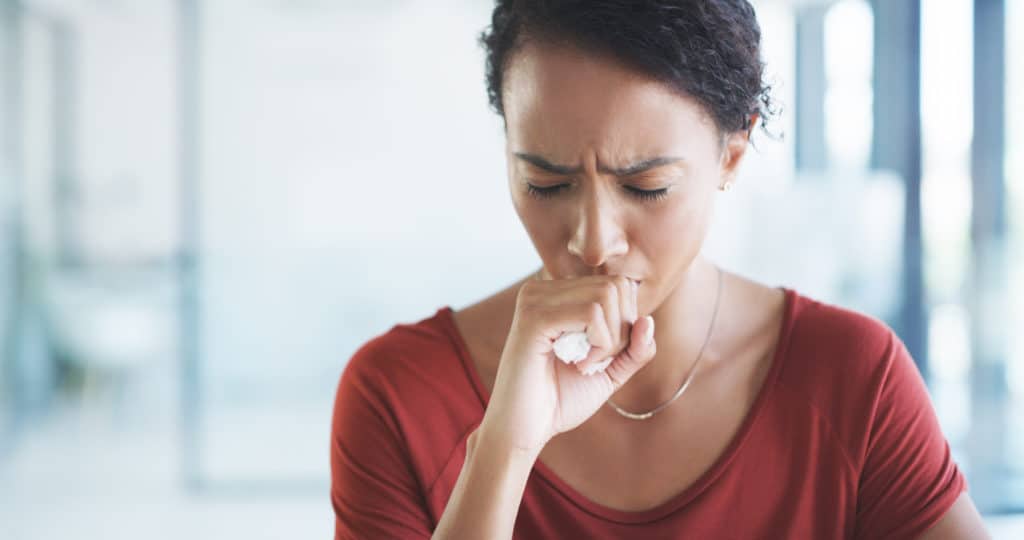I’m an internist and hospitalist that’s been on call for the last month. Some people might say that would be bad timing, considering how quickly the coronavirus disease (COVID-19) has been spreading. But I’m realizing it’s been a blessing. In addition to implementing recommendations from trusted experts like Dr. Fauci, I’m learning so much from answering calls and taking care of patients who have been sick or scared of having COVID-19. At our clinic, we use telemedicine, messages through our online portal, and in-person visits. Here’s what I can share with you thus far; I think it might help.
1) Assume it’s COVID-19.

If you have a cough, sore throat, body aches, and fatigue, assume it’s COVID-19, and self-isolate for at least 2 weeks and until you feel better. You do not need to be tested as long as your symptoms are mild to moderate. This is also the time to call a primary care doctor, so we can schedule a video or phone call to assess your symptoms and plan any next steps with you.
2) Day 5 is often when symptoms feel noticeably worse.
The fifth day of symptoms is when I’m most often called and when folks realize they are really sick. Unlike with influenza (flu) where you feel it on day 1, COVID-19 appears to sneak up on folks. My patients have been reporting some of these symptoms during the first 5 days:
- Raw scratchy throat
- Weird chills
- Dry cough
- Mild headache.
Then sometime during days 5 through 7, they reach out and tell me, “Dr. O, I’m sick.” Cough and fatigue seems to really hit around day 5, and for some folks, pressure around the whole chest (like a tight band is squeezing you) and shortness of breath come out in force. Data shows that symptoms usually start 4 days after people are infected, but it can range from 2 to 14 days.
Shortness of breath is clearly the most distressing and worrisome symptom, as it should be. But with COVID-19, symptoms can appear and change over time. According to the CDC, you may have COVID-19 if you have cough and difficulty breathing, or at least two of the following:
- Fever
- Chills
- Repeated shaking with chills
- Muscle aches
- Headache
- Sore throat
- New loss of taste or smell

3) Diarrhea isn’t as common as you think.
Diarrhea is commonly reported with COVID-19 patients, but it happens around once a day (not 8 to 10 times a day, like some people think). I have not heard many complaints about nausea or vomiting at all.
4) It’s common to feel body aches through day 11.
Don’t feel discouraged if you still feel bad, and it’s day 11. You are not alone. Many of my patients feel more tired and achy around day 7 to 11. Common complaints include lower back pain or an ache between the shoulders. Acetaminophen may help for this. Don’t miss out on savings!Get the best ways to save on your prescriptions delivered to your inbox. By signing up, I agree to GoodRx’s terms of service and privacy policy.
5) Is acetaminophen or ibuprofen safer?
The early warnings about NSAIDs like ibuprofen (Motril, Advil) being unsafe for patients with COVID-19 have largely been corrected. The World Health Organization (WHO) released a statement saying that they don’t recommend avoiding ibuprofen for treating COVID-19 symptoms. The truth is we don’t actually know if ibuprofen and other NSAIDs are unsafe, but my patients are still cautious.
For now, rely on acetaminophen (Tylenol) for body aches, headaches, and throat pain. Acetaminophen is generally safe, and most people can take two of the extra strength (500 mg) tablets every 6 to 8 hours, as needed. The maximum recommended amount of acetaminophen is 4000 mg per day.
Every medication comes with some risks, so talk to your healthcare provider about any concerns you have. The usual warnings in folks with liver disease pertain, so if your doctor has told you in the past not to take acetaminophen or Tylenol, don’t do it.
6) What helps for the cough?

I’ve seen that benzonatate (Tessalon) capsules have helped ease cough in many of my patients. This is a non-sedating medication that numbs the throat and helps reduce the reflex to cough. Your provider will need to evaluate you and give you a prescription for it, but the medication is cheap.
7) What helps for shortness of breath?
In our clinics, we’ve been doing telemedicine visits and medical tent evaluations with patients who have shortness of breath to see how they’re breathing. For example, we see if they can speak in full sentences and move around without having trouble breathing. For those who are staying at home, albuterol inhalers have helped in some cases to reduce tightness in the chest. Pulse oximetry finger monitors, which can be purchased online and at pharmacies for fairly affordable prices, can also be helpful if you want to monitor the oxygen level in your blood. (Oxygen saturation should be at 96% or above.)
8) Do you need to stock up on hydroxychloroquine and azithromycin?
No, you should not stock up on hydroxychloroquine (Plaquenil) or azithromycinGoodRx Savings FinderAzithromycin 6 tablets of 250mg z-pak(1 qty)
9) Assume everyone is infected.
Last but not least: My patients who tested positive and got very sick were fine the 2 days before they were tested, and that’s when they were very contagious. Assume everyone next to you — in the grocery store, at pharmacies, around your neighborhood — are infected, and keep 6 feet apart. I mean it.
We know that social distancing is absolutely critical to stopping the spread of COVID-19, which includes staying at home and managing mild cases from home. Having said that, please call your provider if you have difficulty breathing even with minimal activity. GoodRx is also offering free online screenings if you think you need to be tested, and will help you find a testing center near you.
This article originally appeared on GoodRx.com

Sharon Orrange, MD, MPH
Clinical Associate Professor of Medicine (Clinician Educator)
Associate Professor of Clinical Medicine in the Division of Geriatric, Hospitalist and General Internal Medicine at the Keck School of Medicine of USC. Contributor GoodRx


